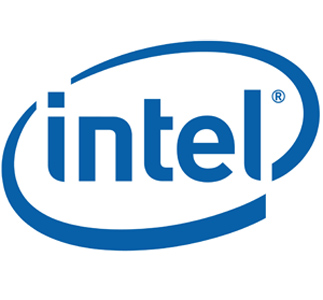
Original Link: https://www.anandtech.com/show/4847/looking-at-sandy-bridge-e-overclocking
A Look Into Sandy Bridge-E Overclocking
by Kristian Vättö on September 21, 2011 4:40 PM EST- Posted in
- CPUs
- Sandy Bridge
- Sandy Bridge E

Note: Most Sandy Bridge-E information is currently under embargo, but the information below comes from Bit-tech's article detailing SNB-E overclocking.
Sandy Bridge-E release is getting closer and closer all the time, but there has been one concern: overclocking. Right now, it looks like the initial i7-lineup will consist of three CPUs: i7-3820, i7-3930K, i7-3960X. We covered most of the SB-E specs in our Additional info on Sandy Bridge-E Processors, X79 and LGA2011 article. The two latter ones, i7-3930K and i7-3960X, will have an unlocked CPU multiplier, which allows easy CPU overclocking by just changing the multiplier. However, the cheapest model, i7-3820, does not have an unlocked CPU multiplier.
With LGA 1155 based CPUs, this means you are limited to adjusting the BCLK (base clock). The BCLK is 100MHz by default but unlike in previous microarchitectures, it can only changed by a few MHz until you run into problems. This means you must buy a CPU with unlocked multiplier (i.e. a K CPU) in order to overclock effectively. There was concern that SNB-E would follow a similar path.
Fortunately, Sandy Bridge-E isn't as limited as regular Sandy Bridge. On top of BCLK and CPU multipliers, Intel has introduced something called reference clock ratio (RCR). This is a multiplier that affects the CPU and memory frequency, but does not affect things such as SATA and USB buses like the BCLK does. Hence it can be changed more dramatically than the BCLK without causing instability. This isn't an open multiplier though; Intel has limited it to 1.00x, 1.25x and 1.66x.
Compared to regular CPU multiplier overclocking, playing around with the RCR is a bit more complicated due to only two possible multipliers. You will need three equations to figure out the three values needed for accurate overclock. Lets break down the math:
- Frequency / Reference clock ratio = X
- X / 100 = CPU multiplier
- X / CPU multiplier = BCLK
To show how these equations work in real world, lets see the math for 4.2GHz overclock.
1) 4200 / 1.25 = 3360
The frequency must be entered in MHz (multiply GHz by 1000). The first step is to figure out which reference clock ratio you need to use. The 1.25 multiplier allows a maximum overclock of around 4.7GHz, so that should be enough for most people. You could, of course, use the 1.66 and simply lower the CPU multiplier enough but then you may face issues with your RAM (more on this later).
2) 3360 / 100 = 33.6 ~ 34
In the second step, you simply plug in the result you got from the previous equation and divide that by 100. You will likely end up getting some decimals, but the CPU multiplier must be a whole number, which means you must round the number. In this case, the closest integer to 33.6 is 34. Remember that your maximum CPU multiplier is 36, so if you get a higher number, you might want to use a bigger RCR.
3) 3360 / 34 = 98.82
In the final step, you need to divide the result you got from the first equation by the CPU multiplier (the rounded one) from the second equation. You will again end up with a decimal number, so round that so that you have only two decimals (BCLK can be adjusted in increments of 0.01MHz). So using the equations, for a 4.2GHz overclock you would set:
Reference clock ratio = 1.25x
CPU multiplier = 34
BCLK = 98.82MHz
1.25 * 34 * 98.82MHz = 4199.85MHz ~ 4.2GHz
And voilá, you are done! Using the above information, you can figure out the three values needed for overclocking your CPU to certain frequency. These three numbers are the ones you will be entering into the BIOS. Before applying these numbers, you can confirm them by multiplying them all together and you should end up with the frequency you entered in step 1. Of course, a voltage change will most likely be required as well but that is part of overclocking basics so we won't get into that now.
There is one bit hidden into the reference clock ratio though - it affects the memory as well. The total memory frequency is:
BCLK * reference clock ratio * memory multiplier
The problem is that we don't know what memory multipliers Intel will support in SB-E platform. Intel claims memory frequency changes in increments of 266MHz, which with 100MHz BCLK suggests at least multipliers of 13.33x, 16.00x and 18.66x. With 1.25x RCR you shouldn't get into troubles with memory, but big overclocks with 1.66x RCR may face some memory limitations, especially if there are no smaller memory multipliers. For example, if the lowest memory multiplier ends up being 13.33x, then your memory would run at 2213MHz with 100MHz BCLK and 1.66x RCR. That might be too much for a stable setup, and you'd certainly want higher quality memory.
Again, a big thanks to Bit-tech for their detailed article on SB-E overclocking!







